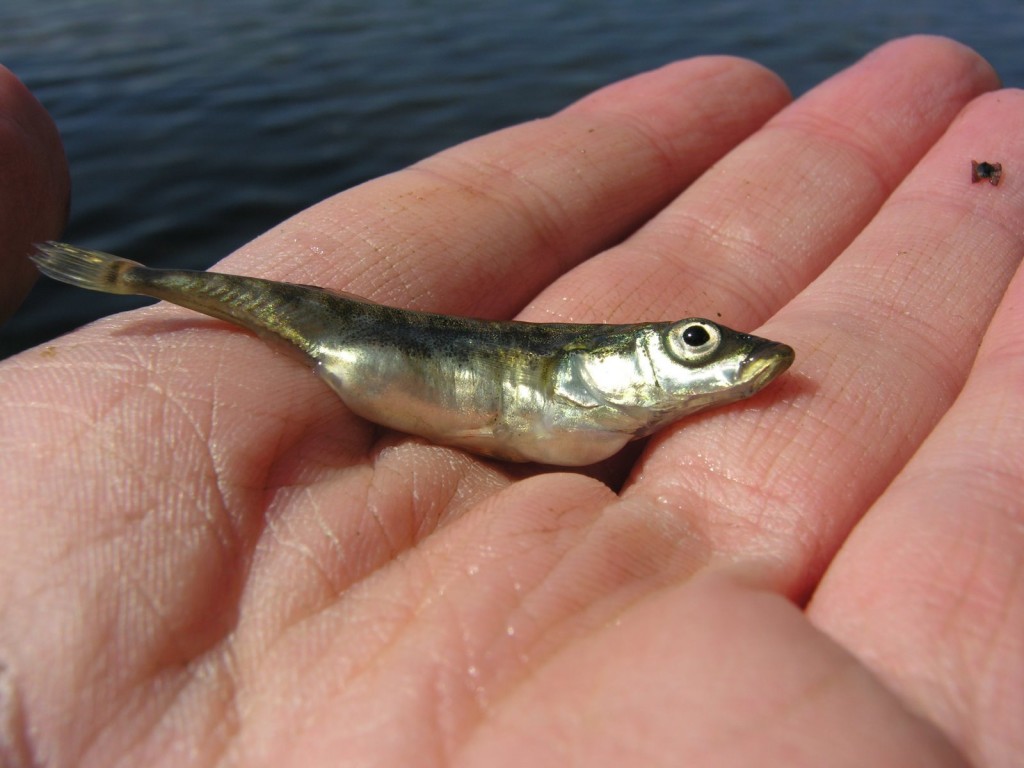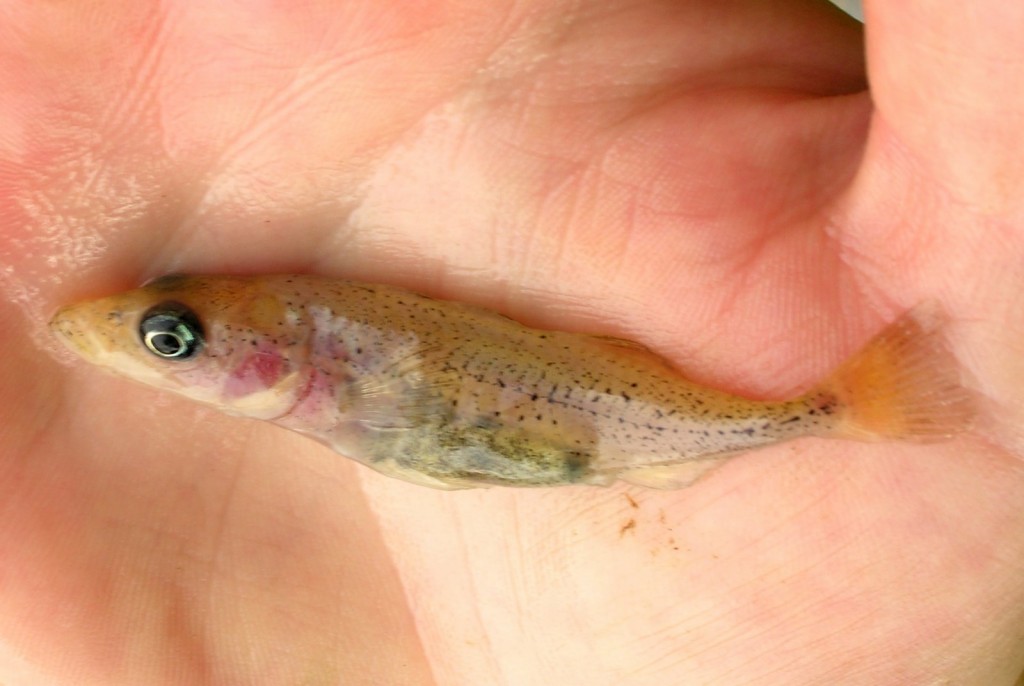Zombie Fish!
One of the most fascinating aspects of threespine stickleback biology I have learned about while here in Alaska is the parasitism of our wild-caught fish by Schistocephalus solidus. As I mentioned before, Dr. David Heins of Tulane University studies this parasite in an effort to understand how it affects the reproductive traits of threespine stickleback.

A fish with the parasite is fairly easy to spot. Schisto is essentially a long white tapeworm that uses the stickleback as its second intermediate host (its first being the copepod that is ingested by the fish and the third being the fish-eating bird where it will reproduce). Infected fish often appear as the poor fellow above with bulging stomachs and chins a the worm bascially shoves all of the fish’s organs out of the way for it to grow. Eventually, the fish begins to lose color…

The worm turns the fish white and changes its behavior so that it moves more slowly and tends to spend more time up near the surface of the water. This mind-control trick makes the infected fish much easier to be picked up by a bird; not only is the stickleback more conspicuous as a white spot in the dark water, but it’s convenient to scoop up without a struggle.
Pretty gruesome, right? Just goes to show that when we’re complaining about things going wrong with our field season, well, things could always be worse!